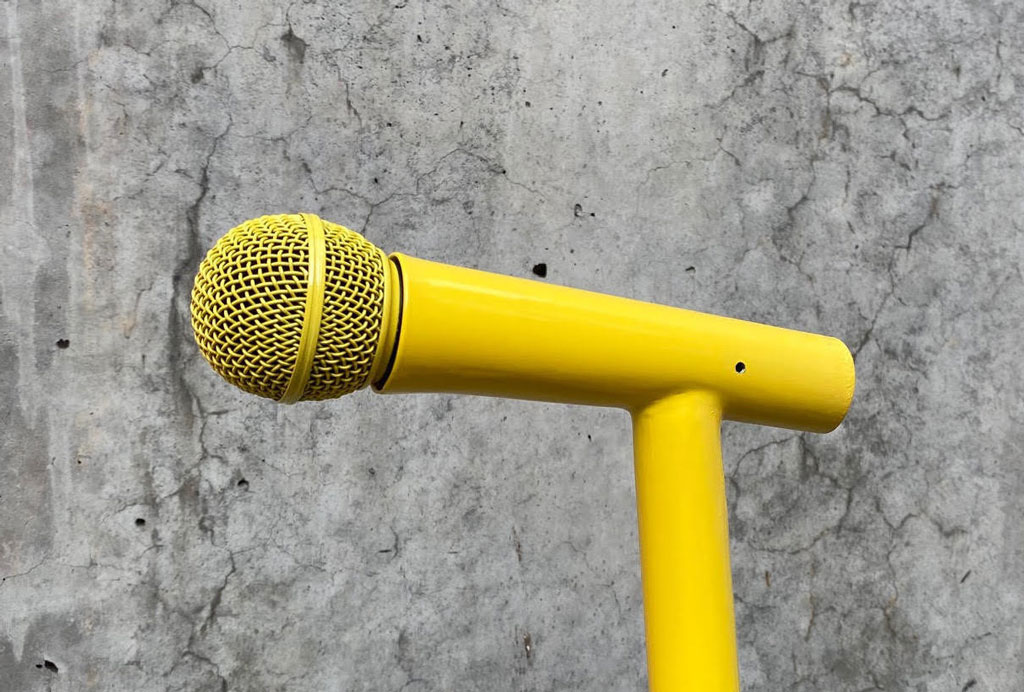ART CITIES:N.York-PS1 Courtyard
 “PS1 Courtyard” is a year-long program to reimagine the uses of and access to the Museum’s outdoor courtyard, which is the interstitial space between the institution, its neighborhood, and the community. Featuring a series of new initiatives, including a participatory installation by Rashid Johnson, a series of Thought Collectives that will test out creative and forward-thinking propositions for the use of public space, and a generative commissioning program to reanimate the Courtyard’s concrete walls, the program will recast one of the few plots of open land in Long Island City.
“PS1 Courtyard” is a year-long program to reimagine the uses of and access to the Museum’s outdoor courtyard, which is the interstitial space between the institution, its neighborhood, and the community. Featuring a series of new initiatives, including a participatory installation by Rashid Johnson, a series of Thought Collectives that will test out creative and forward-thinking propositions for the use of public space, and a generative commissioning program to reanimate the Courtyard’s concrete walls, the program will recast one of the few plots of open land in Long Island City.
By Efi Michalarou
Photo: MOMA Archive
The centerpiece of “PS1 Courtyard” is Rashid Johnson’s “Stage”, a participatory installation and sound work that draws on the history of the microphone as a tool for protest and public oratory, while recalling the metonymic references to microphones in hip-hop lyrics from the 1980s to the present. The work features a yellow powder-coated stage, with Johnson’s signature markings, on which stands of varying heights hold five SM58 microphones, the legendary model that has become an music industry standard since its introduction to the market in the mid 1960s. Echoing unofficial sites of public intellectual and cultural life, such as Speaker’s Corners in London’s Hyde Park and Harlem’s 135th Street and Lenox Avenue, the public is invited to step up onto the stage and speak their mind from Johnson’s Stage. Participants’ statements will be recorded and rebroadcast into speakers installed throughout the courtyard. Rashid Johnson: Stage will also function as a flexible site for programs and performances, featuring performers, poets, activists, and musicians, all available on MoMA PS1’s digital platforms as an archive that captures the urgencies and interests of our unstable times. Also over the course of the next year, a series of Thought Collectives will test ideas on how to progressively use or reimagine public spaces using PS1’s Courtyard as a test site. Through these Thought Collectives, PS1 will respond and contribute to the specificities of the urban environment it inhabits, experimenting with new approaches to public engagement. Thought Collective participants will create a space where emerging cultural voices intersect with leading specialists and voices new to the Museum. Each Thought Collective will be based on a hypothesis, starting with questions around the future of gathering post-COVID-19, food justice, and the intersection of physical and virtual spaces. In contrast to theoretical discussions on urbanism, these public programs will center around a series of events and interventions, ranging from discussions and workshops to screenings and temporary constructions, engaging audiences and participants in order to test their hypotheses. The process and results from each Thought Collective will be documented and displayed throughout the year, enabling visitors to follow along with the evolution of each hypothesis and discover what answers, propositions, or further questions each one generates. Later this fall, the concrete walls that surround PS1’s entrance and courtyard will be transformed through a series of mural commissions, shifting the walls from barriers to invitations to the surrounding neighborhood. This process will unfold through discussion with a group of artists convened to explore the history of murals and their resonance today. Conceived as an outdoor exhibition space that evolves and grows, the project fosters connectivity between the street and the interior courtyard of PS1, responding to both the museum’s architecture and local community concerns.
Info: Moma PS1, 22-25 Jackson Avenue, Queens, Long Island, New York, Duration: 17/9/20–Fall 2021, Days & Hours: Thu-Mon 12:00-18:00, www.moma.org
